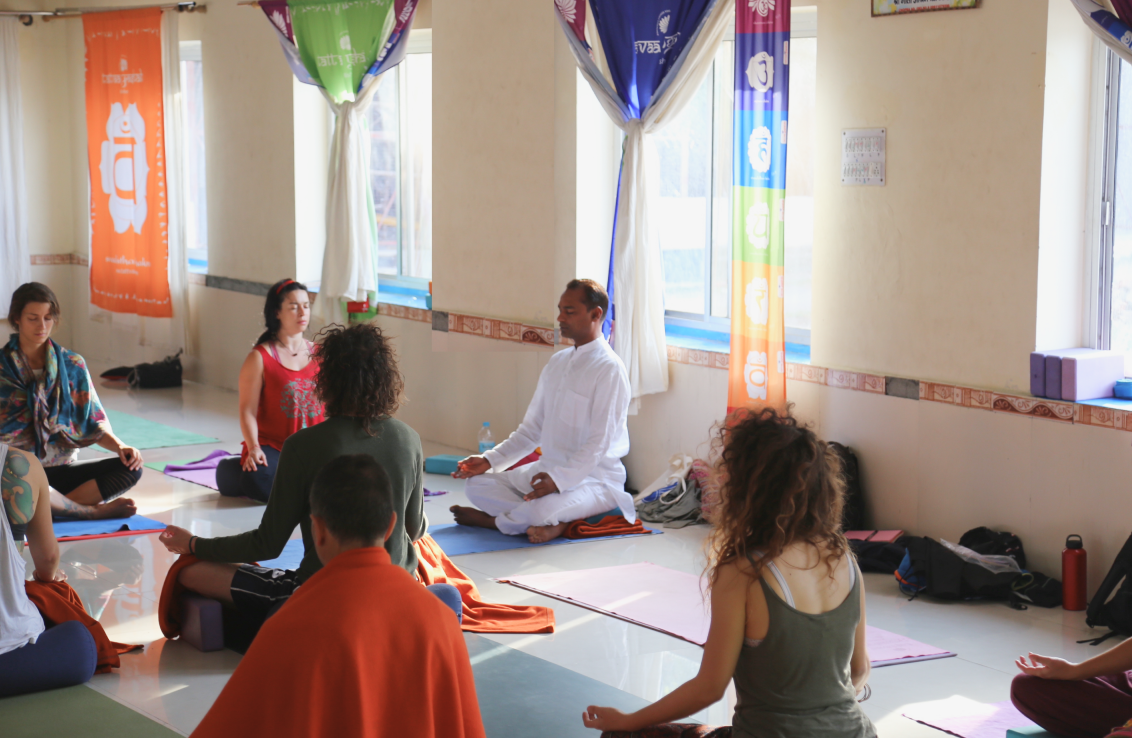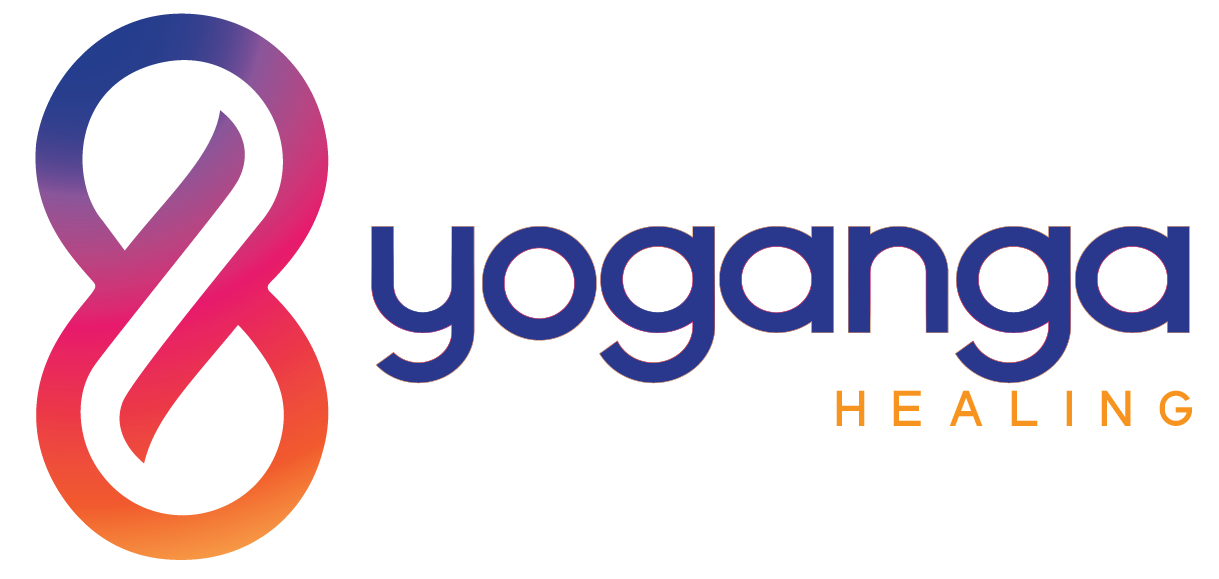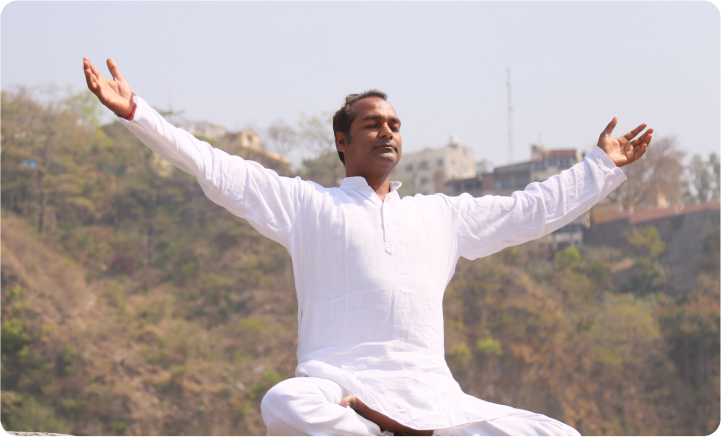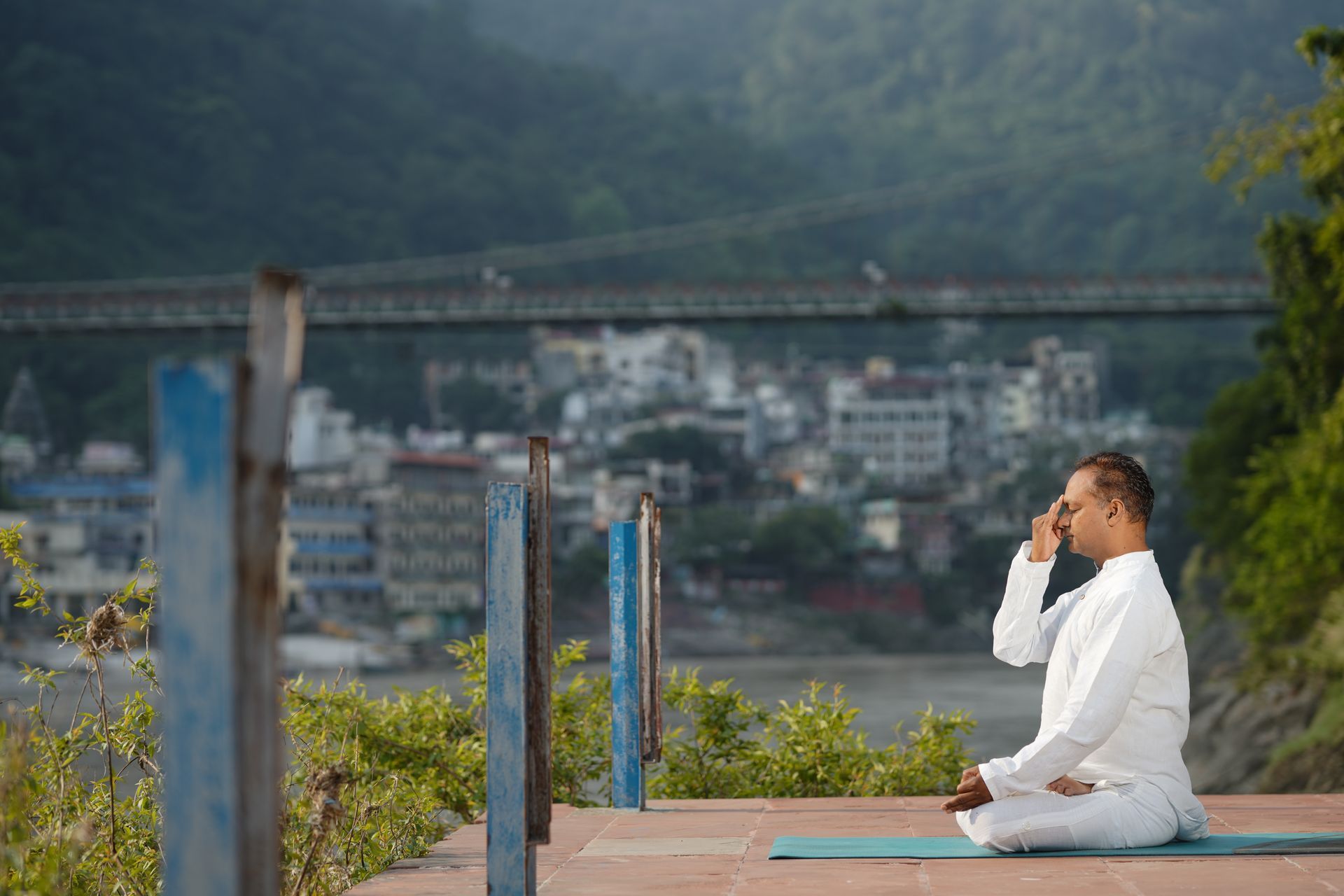Yoga Nidra vs Meditation: Understanding the Key Differences, Similarities & Benefits
Yoganga Healing • October 17, 2023
In our fast-paced world, where stress and anxiety often take center stage, the search for inner peace and relaxation has never been more crucial. Two practices that stand out in this quest are Yoga Nidra and Meditation. But what sets them apart, and how do they compare?
In this article, we will delve into the world of
Yoga Nidra and Meditation, understanding the key differences, similarities, and the incredible benefits they offer.
Yoga Nidra: The Deep Relaxation Technique
Yoga Nidra, often referred to as yogic sleep, is a practice that promotes deep relaxation and stress relief.

The Basics of Yoga Nidra
Yoga Nidra involves a guided meditation that takes you to a state of consciousness between waking and sleeping, where profound relaxation and healing can occur. It focuses on progressive relaxation, body scanning, and visualization.
Benefits of Yoga Nidra
- Stress Reduction: Yoga Nidra is a powerful tool for alleviating stress and anxiety. The deep relaxation it induces helps calm the nervous system, reducing the body's stress response.
- Enhanced Sleep: Many individuals struggle with sleep disorders or poor sleep quality. Yoga Nidra can improve the depth and quality of sleep, leaving you feeling refreshed and energized.
- Enhanced Creativity:
Some practitioners find that Yoga Nidra enhances their creativity and problem-solving abilities. The practice can unlock a deeper connection with the subconscious mind, sparking innovative ideas and solutions.
- Improved Emotional Well-being: Yoga Nidra encourages self-exploration and self-acceptance, helping individuals manage their emotions more effectively. It can lead to a more positive outlook on life and improved mental health.
- Pain Management:
It's been used as a complementary approach to pain management. The deep relaxation can help alleviate physical discomfort and even chronic pain over time.
- Better Concentration:
Yoga Nidra enhances mental clarity and concentration. By reducing mental clutter and promoting relaxation, it can help you focus more effectively on tasks and goals.
- Enhanced Self-awareness: Yoga Nidra allows you to delve deep into your inner self, promoting self-awareness and personal growth. It can help you understand your emotions, habits, and thought patterns better.
- Balanced Autonomic Nervous System: Regular practice of Yoga Nidra can lead to a more balanced autonomic nervous system. It helps harmonize the sympathetic (fight or flight) and parasympathetic (rest and digest) systems, promoting overall well-being.
- Boosted Immune Function: Stress reduction and relaxation techniques in Yoga Nidra have been linked to a boost in the immune system. A stronger immune response can help prevent illness and promote overall health.
- Increased Body-Mind Connection: By focusing on the physical sensations during Yoga Nidra, individuals can develop a stronger connection between their bodies and minds. This can lead to better overall health and well-being.
- Enhanced Self-confidence: The practice of self-acceptance and relaxation in Yoga Nidra can boost self-esteem and self-confidence, empowering individuals to face life's challenges with a positive mindset.
- Improved Digestion: The relaxation induced by Yoga Nidra can have a positive impact on digestion. Stress and tension often lead to digestive issues, which can be alleviated through regular practice.
Meditation: The Mindful Journey
Meditation, on the other hand, is a practice that encompasses a wide range of techniques, all aimed at achieving a state of mindfulness.

Understanding Meditation
Meditation involves focusing your mind on a particular object, thought, or activity to train attention and awareness. It comes in various forms, such as mindfulness meditation, loving-kindness meditation, and transcendental meditation.
Benefits of Meditation
- Stress Reduction: Meditation is renowned for its stress-reducing effects. Regular practice helps calm the mind and reduces the body's stress response, promoting a sense of inner peace.
- Clarity of Mind: Meditation enhances mental clarity and concentration. By training the mind to focus, it helps individuals think more clearly and make better decisions.
- Emotional Well-being: Meditation is a powerful tool for managing emotions. It can help individuals deal with anxiety, depression, and other emotional challenges, promoting overall mental health.
- Enhanced Self-awareness: Through introspection and mindfulness, meditation allows individuals to gain a deeper understanding of themselves, their thought patterns, and their emotions. This self-awareness can lead to personal growth.
- Improved Sleep Quality: Insomnia and sleep disturbances are common in our fast-paced world. Meditation can help improve the quality of sleep, leading to more restful and restorative rest.
- Reduced Anxiety: Meditation has been shown to reduce symptoms of anxiety disorders. By promoting relaxation and mindfulness, it helps individuals manage anxiety effectively.
- Positive Outlook: Regular meditation can lead to a more positive and optimistic outlook on life. It encourages gratitude and a sense of contentment.
- Emotional Resilience: Meditation enhances emotional resilience, helping individuals cope with life's challenges more effectively. It can reduce the impact of stress and adversity.
- Enhanced Relationships: Through improved emotional regulation and empathy, meditation can lead to healthier and more fulfilling relationships with others.
- Pain Management: Meditation can be used as a complementary approach to pain management. It helps individuals better cope with physical discomfort and chronic pain.
- Increased Creativity: Some people find that meditation enhances their creativity. The clear and focused mind that results from meditation can spark innovative ideas.
- Improved Physical Health: Meditation has been linked to improved physical health, including better blood pressure, reduced inflammation, and a strengthened immune system.
- Boosted Self-confidence: Meditation encourages self-acceptance and self-compassion, boosting self-esteem and self-confidence.
- Enhanced Self-control: Through mindfulness and awareness, meditation helps individuals gain better control over their thoughts, emotions, and impulses.
- Enhanced Memory: Meditation can improve memory and cognitive function by enhancing focus and concentration.
Yoga Nidra vs Meditation: Understanding the Key Differences
Now, let's dive into the key differences between Yoga Nidra and Meditation.
1. Definition and Origin:
- Yoga Nidra:
Often referred to as "yogic sleep," Yoga Nidra is a form of guided relaxation that brings you to a state of consciousness between wakefulness and sleeping. Originating from the tantric practice in ancient India, Yoga Nidra involves a series of practiced steps leading to deep relaxation.
- Meditation: Meditation, with roots deep in various cultural and religious traditions, is a practice of focused attention or awareness. It's a broad term that encompasses various techniques, including mindfulness, concentrative, and transcendent practices.
2. Practice and Posture:
- Yoga Nidra:
Typically practiced lying down in the Savasana pose, it requires you to remain still while a guide (either a live instructor or a recorded voice) leads you through the relaxation.
- Meditation: Meditation can be practiced in various postures, such as sitting, lying down, walking, or even standing. It often involves a self-guided focus on an object, mantra, breath, or a specific thought process.
3. Purpose and Outcome:
- Yoga Nidra:
The primary aim is to achieve deep relaxation and access the subconscious and unconscious layers of the mind. It can lead to healing, rejuvenation, and an intricate journey of self-discovery.
- Meditation: The goals can vary depending on the type of meditation. Whether it's to achieve mindfulness, deepen self-awareness, achieve a sense of peace, or connect with a higher consciousness, meditation is often about cultivating a particular quality or state of mind.
4. Duration:
- Yoga Nidra: A typical
Yoga Nidra session can last anywhere between 20 to 45 minutes.
- Meditation: The duration of meditation can vary widely based on the practitioner's preference. It could be as short as 5 minutes or as long as several hours.
5. Guidance:
- Yoga Nidra: It is almost always guided, especially for beginners. The guide leads the practitioner through various stages, from body awareness to deep relaxation.
- Meditation: While guided meditations are common, especially for newcomers, many seasoned practitioners meditate in silence or use specific sounds or mantras to assist their practice.
6. Mind State:
- Yoga Nidra: This practice is about transitioning between wakefulness and sleep, accessing the state of consciousness that lies in between.
- Meditation:
Meditation focuses on varying levels of consciousness, depending on the form. Some are about achieving heightened alertness and focus, while others may lean towards transcendence.
Similarities between Yoga Nidra and Meditation

While there are clear differences between the two practices, they also share several similarities:
- Stress Reduction: Both Yoga Nidra and Meditation are renowned for their exceptional stress-reducing benefits. They help calm the nervous system, reduce the production of stress hormones, and promote relaxation, leading to a profound sense of inner peace and tranquility.
- Improved Sleep Quality: Both practices can enhance the quality of sleep. Yoga Nidra's deep relaxation and Meditation's calming effect on the mind can alleviate insomnia and sleep disturbances, resulting in more restful and restorative sleep.
- Enhanced Overall Well-being: Practicing either Yoga Nidra or Meditation can lead to an overall improvement in well-being. They help individuals manage their emotions better, reduce anxiety and depression, and promote a positive outlook on life.
- Emotional Regulation: Both Yoga Nidra and Meditation aid in emotional regulation. They allow individuals to develop a healthier relationship with their emotions, leading to increased emotional resilience and mental stability.
- Enhanced Concentration: Through regular practice, both Yoga Nidra and Meditation can enhance concentration and mental clarity. They help individuals focus better on tasks and goals, improving productivity and decision-making.
- Mindfulness and Self-awareness: Both practices encourage mindfulness and self-awareness. They enable individuals to observe their thoughts and feelings without judgment, deepening self-understanding and promoting personal growth.
- Pain Management: Yoga Nidra and Meditation can be used as complementary approaches to pain management. They help individuals cope with physical discomfort, making them valuable tools for those dealing with chronic pain.
- Enhanced Self-confidence: Through self-acceptance and self-compassion, both Yoga Nidra and Meditation can boost self-esteem and self-confidence, empowering individuals to face life's challenges with a positive mindset.
- Improved Physical Health: Both practices have been linked to improved physical health, including better blood pressure, reduced inflammation, and a strengthened immune system. These physical benefits contribute to an overall sense of well-being.
- Better Relationships:
By improving emotional regulation, empathy, and self-awareness, Yoga Nidra and Meditation can lead to healthier and more fulfilling relationships with others. The ability to remain calm and empathetic in interactions is a shared outcome of these practices.
Benefits of Incorporating Both Yoga Nidra and Meditation into Your Life
The great news is that you don't have to choose between Yoga Nidra and Meditation. In fact, many people find that incorporating both into their lives provides a holistic approach to well-being.
Here are some of the benefits of combining these practices:
- Comprehensive Stress Management: The synergy of deep relaxation from Yoga Nidra and mental clarity from Meditation offers an excellent stress management solution. You can tackle stress from both a physical and mental perspective, ensuring a more comprehensive approach to stress reduction.
- Improved Sleep: Enjoy better sleep quality and relief from insomnia by practicing both Yoga Nidra and Meditation. Yoga Nidra's ability to induce deep relaxation complements Meditation's power to calm the mind, making it easier to drift into a peaceful slumber.
- Enhanced Self-awareness: By balancing the physical relaxation offered by Yoga Nidra with the self-awareness cultivated through Meditation, you can achieve a higher level of self-awareness. This self-awareness can lead to better decision-making, personal growth, and a deeper understanding of your own emotions and behaviors.
- Holistic Well-being: Both practices contribute to a holistic sense of well-being. Yoga Nidra takes care of your physical health and relaxation, while Meditation addresses your mental and emotional well-being. The combination leads to a balanced state of health in both body and mind.
- Balanced Autonomic Nervous System: Yoga Nidra's deep relaxation harmonizes the sympathetic (fight or flight) and parasympathetic (rest and digest) nervous systems. When combined with Meditation's focus on mindfulness and self-awareness, it ensures a balanced autonomic nervous system, promoting overall well-being.
- Enhanced Emotional Regulation: The combination of deep relaxation from Yoga Nidra and the emotional regulation cultivated through Meditation makes it easier to manage your emotions. You'll be better equipped to deal with life's ups and downs with grace and composure.
Incorporating both Yoga Nidra and Meditation into your daily life offers a powerful and comprehensive approach to well-being. These practices, when combined, provide a holistic path to inner peace, stress reduction, emotional balance, and a deeper understanding of your own self. Whether you choose to practice them sequentially or even simultaneously, the benefits are truly transformative.
Conclusion
In the pursuit of well-being, understanding the differences and similarities between Yoga Nidra and Meditation is crucial. These practices offer profound benefits, whether practiced separately or together. The choice ultimately depends on your personal goals and preferences. So, why not explore both and find the perfect balance for your inner peace and relaxation?
FAQs
New Paragraph
Discover More Articles



Ready to Begin Your Healing Journey?
Discover Peace—Spaces Fill Quickly, So Reserve Today



